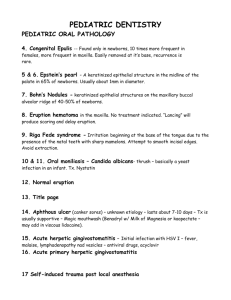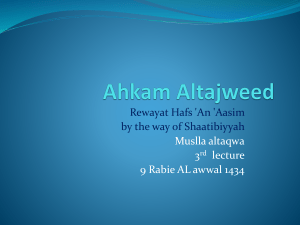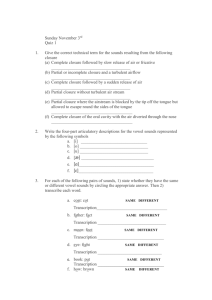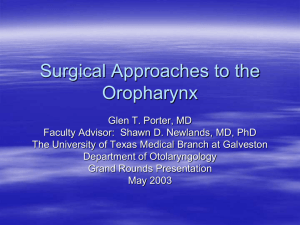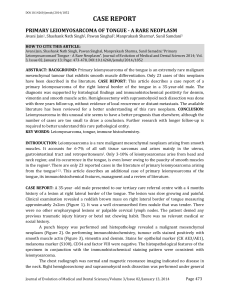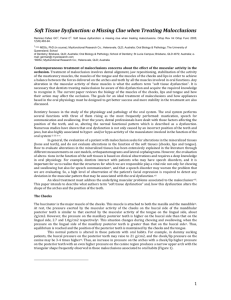Correcting Lateral Lisp: A Speech Therapy Method
advertisement
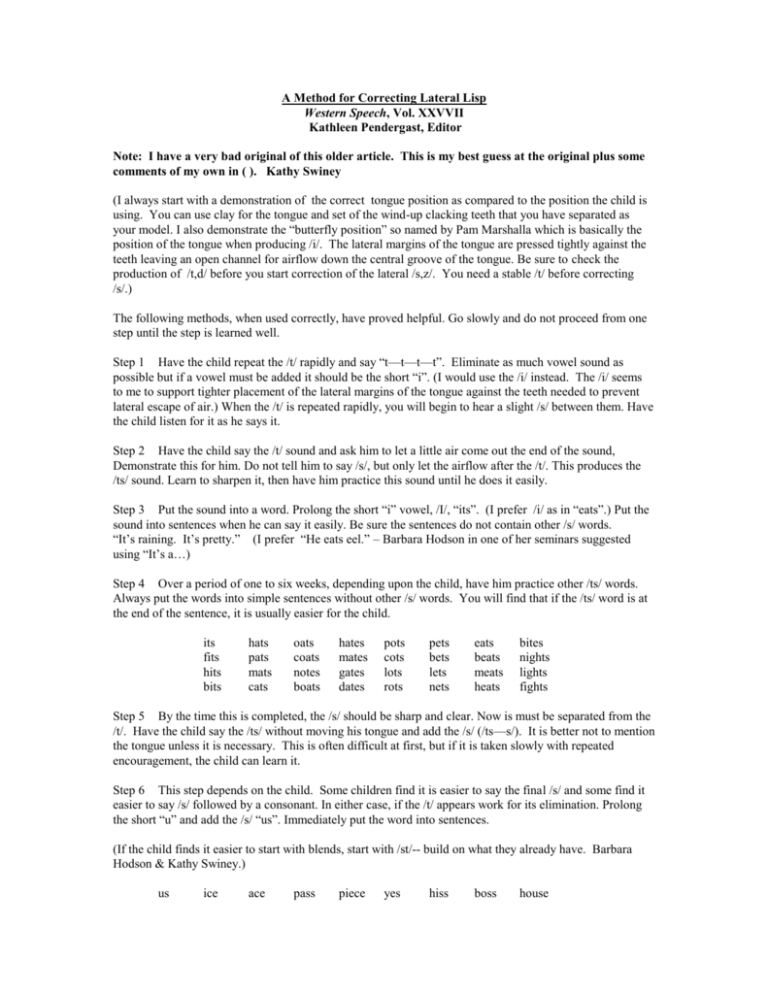
A Method for Correcting Lateral Lisp Western Speech, Vol. XXVVII Kathleen Pendergast, Editor Note: I have a very bad original of this older article. This is my best guess at the original plus some comments of my own in ( ). Kathy Swiney (I always start with a demonstration of the correct tongue position as compared to the position the child is using. You can use clay for the tongue and set of the wind-up clacking teeth that you have separated as your model. I also demonstrate the “butterfly position” so named by Pam Marshalla which is basically the position of the tongue when producing /i/. The lateral margins of the tongue are pressed tightly against the teeth leaving an open channel for airflow down the central groove of the tongue. Be sure to check the production of /t,d/ before you start correction of the lateral /s,z/. You need a stable /t/ before correcting /s/.) The following methods, when used correctly, have proved helpful. Go slowly and do not proceed from one step until the step is learned well. Step 1 Have the child repeat the /t/ rapidly and say “t—t—t—t”. Eliminate as much vowel sound as possible but if a vowel must be added it should be the short “i”. (I would use the /i/ instead. The /i/ seems to me to support tighter placement of the lateral margins of the tongue against the teeth needed to prevent lateral escape of air.) When the /t/ is repeated rapidly, you will begin to hear a slight /s/ between them. Have the child listen for it as he says it. Step 2 Have the child say the /t/ sound and ask him to let a little air come out the end of the sound, Demonstrate this for him. Do not tell him to say /s/, but only let the airflow after the /t/. This produces the /ts/ sound. Learn to sharpen it, then have him practice this sound until he does it easily. Step 3 Put the sound into a word. Prolong the short “i” vowel, /I/, “its”. (I prefer /i/ as in “eats”.) Put the sound into sentences when he can say it easily. Be sure the sentences do not contain other /s/ words. “It’s raining. It’s pretty.” (I prefer “He eats eel.” – Barbara Hodson in one of her seminars suggested using “It’s a…) Step 4 Over a period of one to six weeks, depending upon the child, have him practice other /ts/ words. Always put the words into simple sentences without other /s/ words. You will find that if the /ts/ word is at the end of the sentence, it is usually easier for the child. its fits hits bits hats pats mats cats oats coats notes boats hates mates gates dates pots cots lots rots pets bets lets nets eats beats meats heats bites nights lights fights Step 5 By the time this is completed, the /s/ should be sharp and clear. Now is must be separated from the /t/. Have the child say the /ts/ without moving his tongue and add the /s/ (/ts—s/). It is better not to mention the tongue unless it is necessary. This is often difficult at first, but if it is taken slowly with repeated encouragement, the child can learn it. Step 6 This step depends on the child. Some children find it is easier to say the final /s/ and some find it easier to say /s/ followed by a consonant. In either case, if the /t/ appears work for its elimination. Prolong the short “u” and add the /s/ “us”. Immediately put the word into sentences. (If the child finds it easier to start with blends, start with /st/-- build on what they already have. Barbara Hodson & Kathy Swiney.) us ice ace pass piece yes hiss boss house bus muss fuss mice nice rice face case race grass bass gas niece geese fleece mess guess less miss kiss Alice moss toss loss mouse blouse douse Step 6b (Note: /str/ is a difficult context—plus I usually use /i/ as the vowel initially to use the benefits of the anticipation of the sides of tongue to teeth placement.) smile smoke smart small spot speed spin spell stay step stop stick street string strong straight snow snap snake snore sky school skip skill slap sleep sled slide sway sweep swim sweater (Frankly, unless this –Step 6b—is highly stimulable, I do a more like Step 7 using all /st/ medial words— mister, lasting, etc.) Step 7 Now you are ready for medial /s/. At this point avoid words with the /s/ at the beginning of the syllable followed by a vowel (himself, lesson, beside.) Concentrate on the /s/ at the end of the syllable. mister discover whisper Christmas festival mistaken distant whistling yesterday testing faster master mascot elastic policeman banister baster rooster Step 8 /s/ followed by a vowel in is the hardest step, but should come easily if the proceeding progression has been followed. say same sail safe see seem seen seek sigh sigh sight side so soap sold soak sue soon soup suit sad sand sack sat set send sent said sick sit sift sip sun some supper sucker sofa sew sod sob Step 9 At this time, teach the medial /s/ words with the /s/ at the beginning of the syllable and followed by a vowel. inside outside dancing kissing absent missing upset guessing answer saucer sunset seesaw itself herself myself Auditory training is essential during the teaching of the sound. The child must be able to hear the error when you make it and later when he makes it. Self-monitoring can be learned at a very early age. (Here’s another activity for achieving /s/ which has been very effective for me. Use a Smartee candy. That is the sweet/sour candy that comes in a cellophane wrapped roll. The candy has an indentation on each side. Have the student place the candy on the alveolar ridge and hold it there by placing the tip of the tongue in the indentation. The teeth need to be slightly apart. To be successful, s/he must have the lateral margins of the tongue against the sides of the teeth. Ask the student to blow, if he changes position and produces lateral airflow, the candy will fall. My students are more than happy to practice the technique!) Best wishes. Please share your ideas with me, too.

